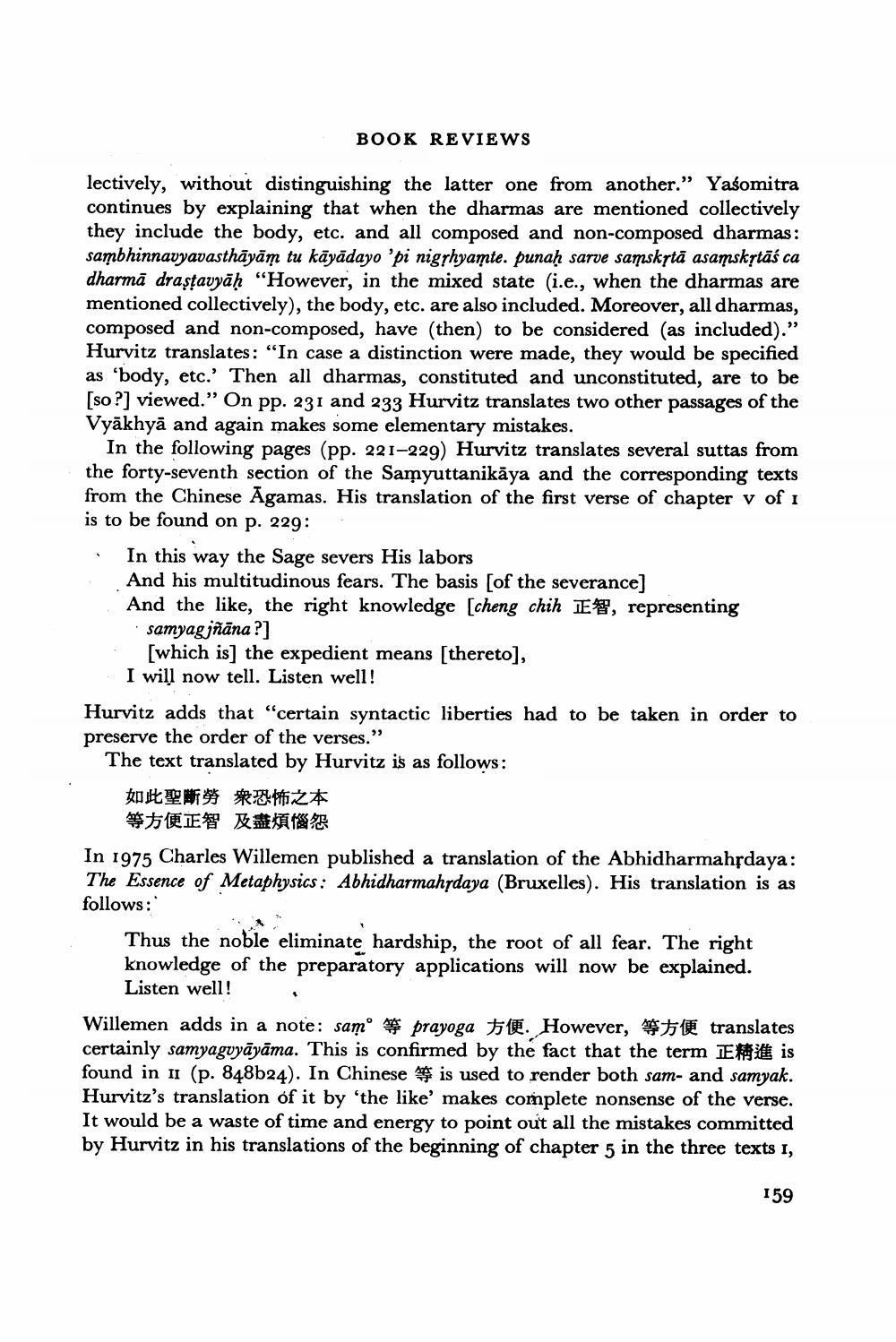________________
BOOK REVIEWS
lectively, without distinguishing the latter one from another." Yasomitra continues by explaining that when the dharmas are mentioned collectively they include the body, etc. and all composed and non-composed dharmas: sambhinnavyavasthāyām tu kāyādayo 'pi nigrhyamte. punaḥ sarve samskṛtā asamskṛtāś ca dharma draṣṭavyāḥ "However, in the mixed state (i.e., when the dharmas are mentioned collectively), the body, etc. are also included. Moreover, all dharmas, composed and non-composed, have (then) to be considered (as included)." Hurvitz translates: "In case a distinction were made, they would be specified as 'body, etc.' Then all dharmas, constituted and unconstituted, are to be [so?] viewed." On pp. 231 and 233 Hurvitz translates two other passages of the Vyakhyā and again makes some elementary mistakes.
In the following pages (pp. 221-229) Hurvitz translates several suttas from the forty-seventh section of the Samyuttanikaya and the corresponding texts from the Chinese Agamas. His translation of the first verse of chapter v of 1 is to be found on p. 229:
In this way the Sage severs His labors
And his multitudinous fears. The basis [of the severance]
And the like, the right knowledge [cheng chih E, representing
samyagjñāna?]
[which is] the expedient means [thereto],
I will now tell. Listen well!
Hurvitz adds that "certain syntactic liberties had to be taken in order to
preserve the order of the verses."
The text translated by Hurvitz is as follows:
如此聖斷勞来恐怖之本
等方便正及盡煩惱怨
In 1975 Charles Willemen published a translation of the Abhidharmahrdaya: The Essence of Metaphysics: Abhidharmahṛdaya (Bruxelles). His translation is as follows:
Thus the noble eliminate hardship, the root of all fear. The right knowledge of the preparatory applications will now be explained. Listen well!
prayoga. However,
Willemen adds in a note: sam translates certainly samyagvyāyāma. This is confirmed by the fact that the term E is found in II (p. 848b24). In Chinese is used to render both sam- and samyak. Hurvitz's translation of it by 'the like' makes complete nonsense of the verse. It would be a waste of time and energy to point out all the mistakes committed by Hurvitz in his translations of the beginning of chapter 5 in the three texts I,
159




